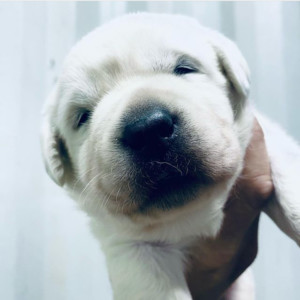

@rockyriverretrievers on Instagram
Canine parvovirus is a life-threatening disease found in puppies and dogs and can be transmitted to other dogs. There are other strains of parvo but they can not be transmitted through different species. ( A cat can get the cat strain of parvo, etc.) Humans are not affected by this disease but can pass it on to other dogs if they have been touching one that has it. Particularly, If someone comes in contact with an infected dog’s feces, then they have a chance of spreading parvo. Parvo is most often fatal as it attacks the canine’s white blood cells leading to cardiac problems.
Here’s another article from the American Kennel Club about parvo.
Here’s what you can do to prevent parvo:
The biggest thing you can do to prevent parvo is to vaccinate against it. As a puppy, dogs are more likely to get parvo. It is crucial to get the shots they need on schedule. (Refer to our Rocky River retrievers Shot Schedule for more info on this.) The parvo vaccine is usually given at 6-8 weeks old. The puppy will then get a booster every three weeks until 16 weeks old and another booster shot after one year old. This helps to build up your puppy’s immune system and keep it safe from these viruses. It is optimal to give an additional parvo booster to your dog every three years to keep the chances of contracting the disease to a minimum.
Parvovirus can survive in the environment for a long time. Protect your dog by avoiding its exposure to unvaccinated dogs. If a puppy is still during its initial stages of receiving shots, it is best to keep an unvaccinated dog away from it as it will likely expose your dog to the virus. This includes puppies who haven’t finished vaccination.
Unless your puppy has received at least three vaccination shots for the virus, it is better to avoid bringing a new additional puppy home during this time.
Parvo can be a tricky disease to deal with as it has a high percentage of deaths. Knowing dangerous symptoms can help you to catch it early and work with your vet to increase your dog’s survival chances. If you notice vomiting, dehydration, and severe weight loss, it is crucial to get it checked by your vet. These symptoms show up around 3 to 7 days after the dog is infected and need to be carefully monitored to avoid them getting sicker. As you bring a puppy into your home, you take full responsibility to watch over its health and needs. Being aware of potential dangers and how to prevent them increases the likelihood of a happy and healthy life for your dog. We strongly encourage you to get your dog vaccinated and do what you can to protect it from these dangers.
Check out our pups!
Here’s a video about this:
White Labrador Retrievers capture hearts with their striking pale coats and gentle demeanor. Whether you're…
By Cheryl Nelson, Professional Dog Groomer Well honey, sit down and let me tell you…
By Cheryl Nelson, Professional Dog Groomer Oh honey, let me tell you about white Labradors…
By Dr. Carrie Taylor, Canine Geneticist Let me start with a confession: I've spent the…
By Ben Tanner, Owner of Rocky River Retrievers As someone who has dedicated over two…
By Dr. Joseph Wilson, DVM As a veterinarian with over 15 years of experience,…
This website uses cookies.